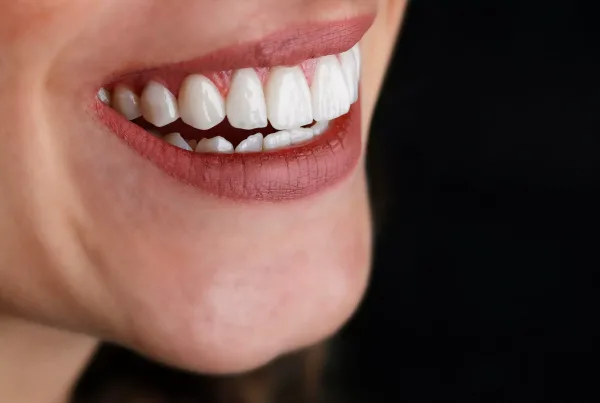
Oral and dental health is an essential part of our overall health. Being conscious about this is vital for preventing and treating gum diseases. Gum recession and common issues like gum inflammation and periodontitis can have severe consequences if left untreated. This article will provide a comprehensive overview of factors affecting gum health, symptoms of diseases, causes, and treatment methods. Additionally, we’ll share practical tips on preventive measures against gum diseases.
What is the Gum Recession?
Gum recession is a condition where the gum tissue pulls away from the roots of the teeth, leading to more exposure of the teeth.
Typically, gum tissue covers the tissues supporting and surrounding the roots of the teeth. However, various factors can cause gum recession, exposing sensitive areas of the teeth or even the roots.
Gum diseases often cause gum recession and can lead to tooth loss and permanent damage to the gum tissue if not treated in time.
Causes of Gum Recession
Gum recession can occur due to a combination of various factors. Poor oral hygiene, genetic factors, irregular and unhealthy dietary habits, and hormonal changes are contributing factors.
The combination of these factors can contribute to the development of gum recession. Preventive measures and regularly visiting a dentist are essential for maintaining gum health.
When Does Gum Recession Occur?
Gum recession can occur at any age, but the risk of gum recession may arise in certain situations or when risk factors are present. Gum diseases like gingivitis and periodontitis are the leading causes of gum recession. Additionally, some individuals may be genetically predisposed to gum diseases.
Gum recession occurs with the continuation of poor oral hygiene habits. Therefore, regular dental check-ups and good oral hygiene habits should be maintained throughout life.
Stages of Gum Recession
Gum recession develops in several stages and progresses over time.
• Early Stage: The initial stage of gum recession usually starts with a slight gum recession. There may be mild redness, swelling, and sensitivity in the gums. The root surfaces of the teeth may begin to be exposed.
• Moderate Stage: Gum recession becomes more noticeable at this stage. The gums recede further, and the tooth roots become more exposed. Gaps between the teeth may increase, and tooth sensitivity may increase.
• Advanced Stage: As gum recession progresses, the supporting tissues of the teeth are significantly affected: tooth mobility, gum bleeding, gum inflammation, and even the risk of tooth loss increase.
At each stage, appropriate treatment can be initiated to reduce the effects of gum recession and prevent its progression. In such cases, it is necessary to consult your dentist and undergo an examination.
What is Gum Inflammation?
Gum inflammation is the condition where the gums become inflamed. Gum inflammation can manifest with redness, swelling, and bleeding of the gums. The accumulation of bacteria called plaque on the tooth surface can affect the gums and lead to gum inflammation.
Causes of Gum Inflammation
Plaque accumulation can irritate the soft tissues surrounding the gums and lead to gum inflammation. In some cases, factors such as hormonal changes, dietary habits, and smoking can also cause gum inflammation.
How to Prevent Gum Inflammation?
You should first pay attention to your dental care to prevent gum inflammation. It would help to brush your teeth twice daily, preferably in the morning and before bedtime. Additionally, you can use dental floss to clean debris and plaque between your teeth.
Smoking and excessive alcohol consumption can negatively affect gum health and increase the risk of gum inflammation. You can try to avoid smoking and alcohol consumption. Rinsing your mouth with an antiseptic mouthwash can help prevent gum inflammation.
If left untreated, gum inflammation can progress to periodontitis, a more severe gum disease, from a mild form called gingivitis. Early detection and treatment of gum inflammation can prevent its progression and maintain gum health.
What is Periodontitis?
Periodontitis is an infection of the gums and the tissues supporting the teeth that develop with the progression of gum inflammation. Periodontitis involves inflammation of supporting tissues around the teeth, such as the gums, alveolar bone, and periodontal ligament. This condition can lead to tooth loss and serious oral health problems.
Symptoms of periodontitis may include gum recession, redness, swelling, bleeding of the gums, tooth mobility, and the formation of pus under the gums.
Causes of Periodontitis
Periodontitis occurs when gum inflammation is not treated. Many people with gum inflammation can control their condition with appropriate treatment and regular oral hygiene habits. However, in some cases, gum inflammation can progress to periodontitis.
Treatment of Periodontitis
The treatment of periodontitis involves a series of procedures determined by the dentist. These procedures may include dental plaque cleaning, periodontal pocket cleaning, surgical treatments, antibiotic therapy, and other dental interventions.
During treatment, the patient must continue practicing regular oral hygiene. Early diagnosis and treatment of periodontitis are critical in
maintaining gum and dental health.
How to Prevent Periodontitis?
You can take some measures to prevent periodontitis. First and foremost, pay attention to oral hygiene. You can follow your dentist’s recommendations by regularly visiting your dentist. Additionally, your dentist can assess your gum health, diagnose problems such as gum inflammation or periodontitis early, and recommend appropriate treatment.
Healthy dietary habits can prevent such problems. By reducing the consumption of sugary and acidic foods, you can maintain your mineral intake at an adequate level.
Stages of Periodontitis
Periodontitis generally develops in the following stages:
• Mild Periodontitis (Early Stage): In this stage, the gums may be slightly inflamed, and gum recession may have started. Symptoms such as redness, mild swelling, and bleeding of the gums may be observed.
• Moderate Periodontitis: Gum recession and more damage to the supportive tissues of the teeth occur in this stage. The periodontal pocket deepens, and the tooth roots become more exposed. Gaps between teeth may increase, and tooth mobility may be felt.
• Severe Periodontitis: At this stage, gum recession and destruction of supporting tissues reach severe levels. The periodontal pocket deepens, significant damage occurs in the tooth roots, and the risk of tooth loss increases. Pain, sensitivity, and pus formation under the gums may also occur.
At each stage, appropriate treatment can be applied to reduce the effects of periodontitis and stop its progression. Regular dental check-ups and good oral hygiene habits are essential for the early treatment of periodontitis.
Treatment methods may vary depending on the stage and are determined by your dentist. Therefore, if you notice symptoms of periodontitis, you should consult your dentist as soon as possible.
7 Precautions to Avoid Gum Diseases
Gum diseases characterized by gum inflammation and bleeding are severe health problems. Here are steps you can take to avoid gum diseases:
• Regularly visit your dentist. You can also get dental plaque cleaning. Dental plaque, formed by the hardening of bacterial plaques on the gums, causes gum inflammation.
• You can maintain your dental health by regularly brushing your teeth and using dental floss. This way, you can remove bacteria between your teeth and the gum line.
• Sugary and acidic foods weaken tooth enamel and provide a breeding ground for bacteria. You can reduce the consumption of such foods.
• Smoking reduces blood flow to the gums.





